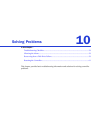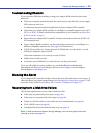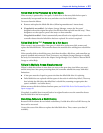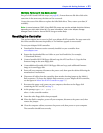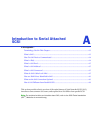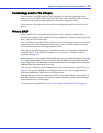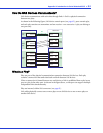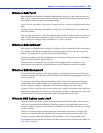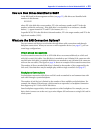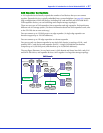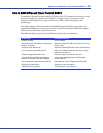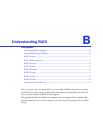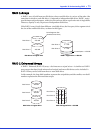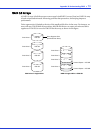
Appendix A: Introduction to Serial Attached SCSI ● 66
How are Disk Drives Identified in SAS?
In the BIOS and in the management utilities (see page 55), disk drives are identified with
numbers in this format:
XX:YY:ZZ
where XX is the disk drive count number, YY is the enclosure number, and ZZ is the slot
number (within the enclosure). If the disk drive is not installed in an enclosure, a double
dashes (--) appear instead of YY and ZZ (for instance, 01:--:--).
In parallel SCSI, XX is the disk drive’s channel number, YY is the target number, and ZZ is the
logical unit number (LUN).
What are the SAS Connection Options?
You can connect end devices to each other through direct cable connections and through
backplane connections. When you use one or more expander devices (see page 67), you can
create large configurations.
Direct-attach Connections
In a direct-attach connection, SAS or SATA disk drives are connected directly to a SAS card
with SAS or mini-SAS cables. One disk drive is attached to one SAS/mini-SAS connector with
one SAS/mini-SAS cable (or multiple disk drives are attached to one SAS/mini-SAS connector
with one fan-out cable). The figure on page 34 shows an example of direct-attach connections.
The number of direct-attached disk drives is limited to the number of phys supported by the
SAS card. (Note that there may be multiple phys within a single connector. See page 67.)
Backplane Connections
In a backplane connection, disk drives and SAS cards are attached to and communicate with
each other through a system backplane.
The number of end devices is limited to the number of slots available on the backplane. For
example, the Adaptec S50 enclosure, which contains an expander, is a backplane connection
that supports up to 12 SAS or SATA disk drives.
Some backplanes support daisy-chain expansion to other backplanes. For example, you can
daisy-chain (connect one to the next) up to nine Adaptec S50 enclosures to a single SAS card in
a host system.



